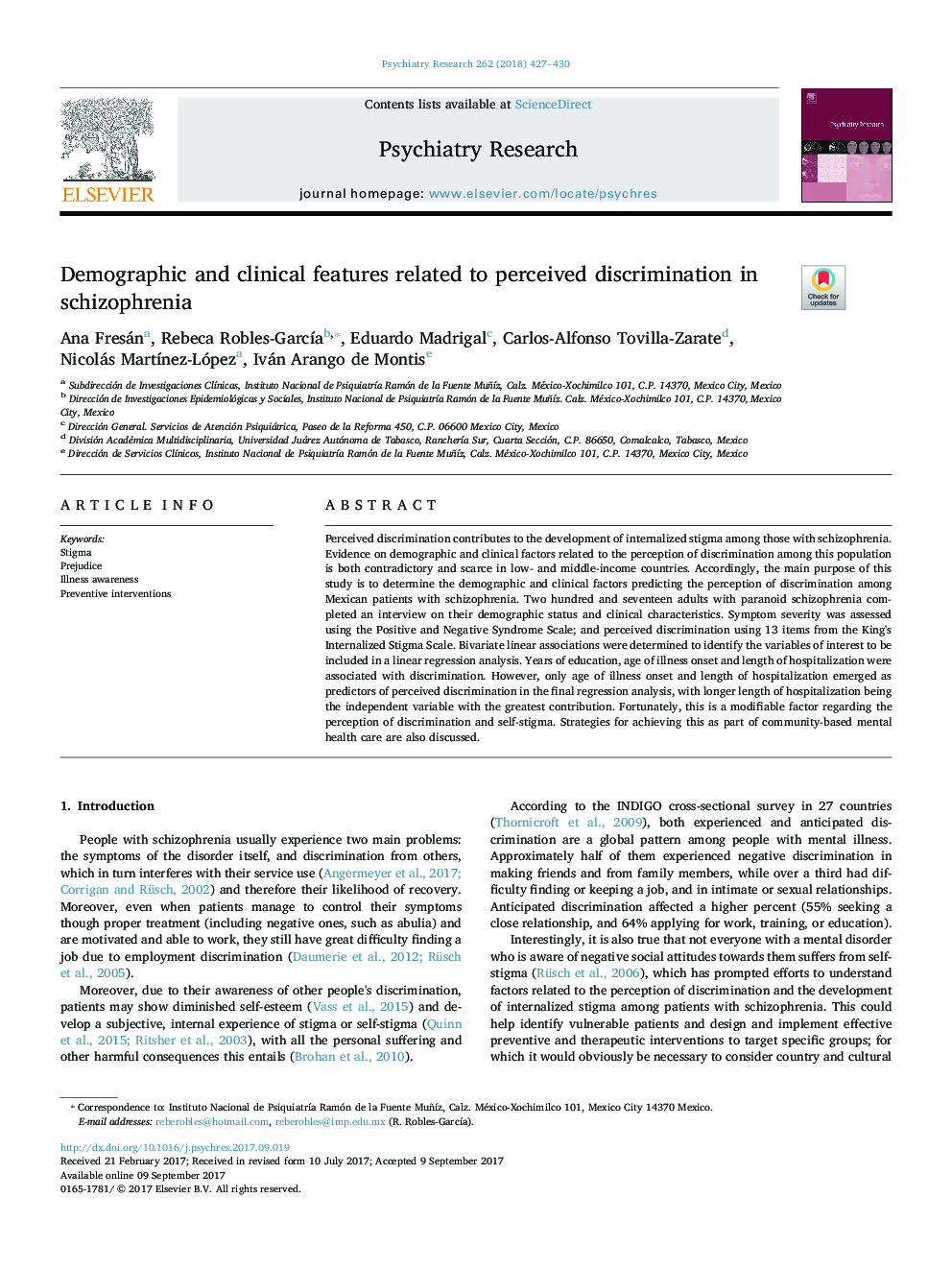| Article ID | Journal | Published Year | Pages | File Type |
|---|---|---|---|---|
| 6811719 | Psychiatry Research | 2018 | 4 Pages |
Abstract
Perceived discrimination contributes to the development of internalized stigma among those with schizophrenia. Evidence on demographic and clinical factors related to the perception of discrimination among this population is both contradictory and scarce in low- and middle-income countries. Accordingly, the main purpose of this study is to determine the demographic and clinical factors predicting the perception of discrimination among Mexican patients with schizophrenia. Two hundred and seventeen adults with paranoid schizophrenia completed an interview on their demographic status and clinical characteristics. Symptom severity was assessed using the Positive and Negative Syndrome Scale; and perceived discrimination using 13 items from the King's Internalized Stigma Scale. Bivariate linear associations were determined to identify the variables of interest to be included in a linear regression analysis. Years of education, age of illness onset and length of hospitalization were associated with discrimination. However, only age of illness onset and length of hospitalization emerged as predictors of perceived discrimination in the final regression analysis, with longer length of hospitalization being the independent variable with the greatest contribution. Fortunately, this is a modifiable factor regarding the perception of discrimination and self-stigma. Strategies for achieving this as part of community-based mental health care are also discussed.
Related Topics
Life Sciences
Neuroscience
Biological Psychiatry
Authors
Ana Fresán, Rebeca Robles-GarcÃa, Eduardo Madrigal, Carlos-Alfonso Tovilla-Zarate, Nicolás MartÃnez-López, Iván Arango de Montis,
